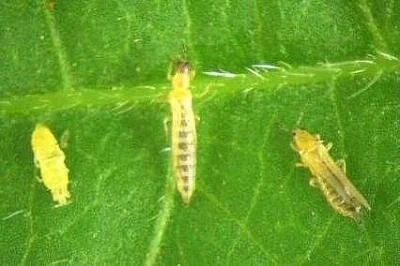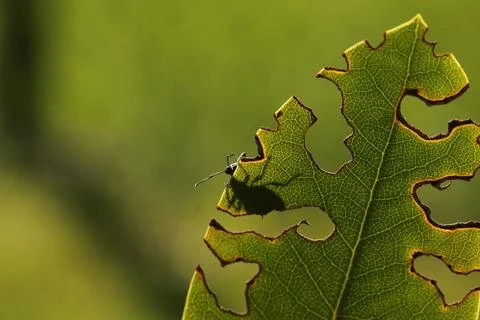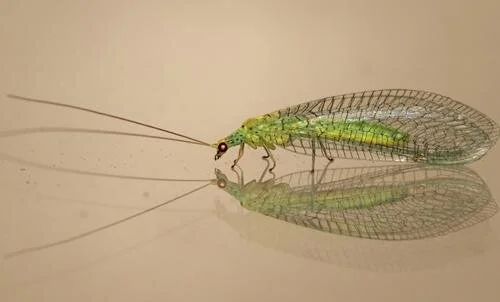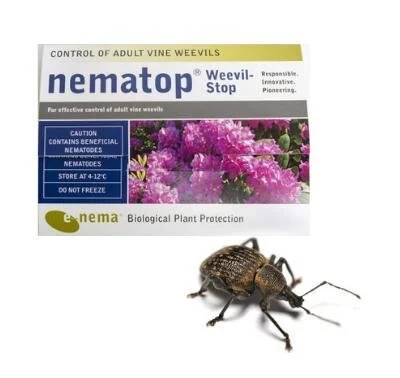DEALING WITH COMMON FLOWER PESTS
Since moving to our current home from our flat in central London a couple of years ago, we’ve adapted from our very city-centric view of a commuter train line to working from home with a view of the garden, watching it change through the seasons. We inherited a mature overgrown garden full of bushy shrubs which out-competeded the ground cover and hogged the sunlight, so we worked on clearing some space. Collecting cuttings from family and friends and picking up bulbs and plants from garden centres, suddenly we were enjoying a lot more variety in the garden but with that came extra work — not just keeping the slugs and snails at bay but, in particular last year, aphids of every type! Wooly ones on the apple tree, black, green and winged ones on the fresh sprouting forth stems of our new plants. A blast with the garden hose bought us some time for our plants to recover but within a week or so the plants were covered again and eventually we lost the battle. Tessa Cobley at Ladybird Plantcare, who last month shared her tips for controlling the slug population in your garden, is back to help us protect our precious flower plants from pests in a controlled and more natural way. Over to Tessa...
Growing in beautiful technicolour brings so much joy to the garden. Whether you are growing flowers to enjoy outside or to bring inside to fill your vases, keeping a check on flower-loving pests is all part of the process.
By growing flowers we are encouraging wildlife, especially pollinators, which is great. Unfortunately you will also find there are some much more prolific beasts that will also be attracted to the garden. Below are a few of the most common flower pests and how to handle them without chemicals.
Aphids
APHIDS
Often known as green fly or blackfly, aphid numbers get out of control very quickly. Their ability to reproduce is astounding — they are actually born pregnant! Aphids are sap-suckers, feeding on the plants and leaving them weakend, ravished-looking and sticky. They can also spread plant diseases.
A secondary problem of an aphid infestation is ants. Ants love aphids because they feed on the honeydew that is created when the aphids feed on plants. So you now have aphids and ants… What can you do?
Firstly you’ll need to control these ants, which you can do with a species of nematode (microscopic eelworm) that you apply to their nests, causing them to move on.
Then onto the aphids. As aphids are one of the most common and widespread garden pests, there are lots of commercially available natural predators. The most well known and popular is the ladybird. Ladybirds and their larvae devour huge quantities of aphids. Next up are the beautiful Lacewings, gorgeous green creatures with delicate translucent wings, whose larvae are ferocious eaters and can consume 35 or more aphids each!
There are other options too, tiny parasitic wasps and special aphid midge all do a wonderful job at controlling an aphid infestation.
Thrips
THRIPS
Next up is Thrips, another sap-sucker causing flowers, fruit and foliage to be deformed, weakening the plant and eventually killing it.
Thrips are tiny, very difficult to spot and often gardeners don’t know they have thrips until they start to notice brown petals once buds open, as well as deformed, stunted fruit.
Where possible, remove infested leaves, buds and stems because this will initially reduce numbers. Thrips are very difficult to reach with chemical sprays, but predatory mites are small enough to find and eat them, making biological control (the process of introducing natural predators) the best answer to this problem.
Vine weevil
VINE WEEVIL
If the colour in your garden comes from pots or border shrubs like Rhododendron then you need to know about vine weevil.
Vine weevil are black beetles about 8mm long, narrower at the front than the back. If you see bitten edges around the leaves of your plants, then suspect vine weevil. They are rarely seen in the daytime.
The larvae are grubs which feast on plant roots, often completely severing them from the upper stems. They have a soft creamy-white body, up to 1.5 cm long, and brown heads. They often lie in a sort of "C" shape. The damage caused by the adults is unsightly, but the grubs can cause the plant to die.
Vine weevil are very easy to treat — these nematodes control the grubs and stop them from feeding on plant roots and these traps get rid of the adults.
You may find that you have a pest problem and it isn't any of the above, so for more pest identification advice head over here!









